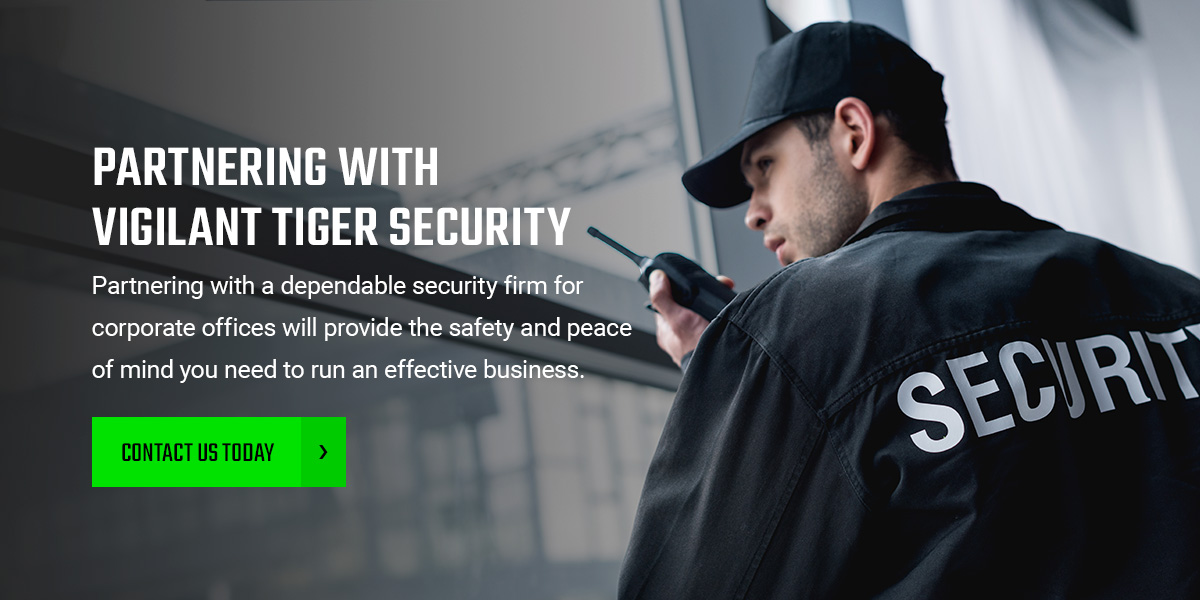Boost Corporate Security: Methods for a Robust Protection
Boost Corporate Security: Methods for a Robust Protection
Blog Article
From Cybersecurity to Physical Actions: Enhancing Corporate Security in an Altering World
In today's swiftly progressing electronic landscape, the relevance of business security can not be overemphasized. As cyber threats come to be common and significantly advanced, companies must go past traditional cybersecurity procedures to safeguard their procedures and possessions - corporate security. This is where the assimilation of physical security steps comes to be important. By incorporating the strengths of both cybersecurity and physical safety, firms can create a detailed protection technique that resolves the varied array of hazards they deal with. In this discussion, we will discover the transforming threat landscape, the requirement to incorporate cybersecurity and physical security, the implementation of multi-factor authentication procedures, the importance of worker recognition and training, and the adjustment of security measures for remote workforces. By analyzing these crucial locations, we will certainly get beneficial understandings right into just how companies can reinforce their company protection in an ever-changing globe.
Comprehending the Transforming Hazard Landscape
The advancing nature of the modern world requires a thorough understanding of the changing danger landscape for reliable company safety and security. It is vital for companies to stay informed and adapt their safety gauges to address these developing dangers.
One key element of comprehending the transforming risk landscape is acknowledging the different types of risks that organizations face. Additionally, physical threats such as burglary, criminal damage, and business espionage continue to be widespread problems for organizations.
Tracking and examining the risk landscape is necessary in order to determine potential risks and vulnerabilities. This entails remaining updated on the newest cybersecurity trends, assessing hazard knowledge reports, and performing normal danger evaluations. By understanding the transforming risk landscape, organizations can proactively implement proper safety actions to alleviate dangers and protect their properties, track record, and stakeholders.
Integrating Cybersecurity and Physical Safety And Security
Incorporating cybersecurity and physical safety is important for comprehensive company security in today's interconnected and electronic landscape. As companies progressively count on innovation and interconnected systems, the boundaries in between physical and cyber risks are coming to be blurred. To properly secure against these dangers, a holistic method that combines both cybersecurity and physical safety measures is necessary.
Cybersecurity concentrates on securing electronic assets, such as networks, data, and systems, from unauthorized gain access to, disturbance, and theft. Physical safety, on the various other hand, encompasses procedures to safeguard physical assets, people, and facilities from vulnerabilities and risks. By incorporating these 2 domain names, organizations can attend to susceptabilities and hazards from both physical and digital angles, thus improving their total security posture.
The combination of these two disciplines permits a much more detailed understanding of protection threats and enables a unified reaction to events. As an example, physical access controls can be improved by integrating them with cybersecurity procedures, such as two-factor authentication or biometric identification. Similarly, cybersecurity steps can be complemented by physical safety and security steps, such as surveillance video cameras, alarms, and protected access points.

Executing Multi-Factor Verification Measures
As organizations significantly prioritize detailed protection steps, one effective strategy is the implementation of multi-factor verification measures. Multi-factor authentication (MFA) is a safety approach that requires individuals to give multiple forms of recognition to access a system or application. This strategy includes an click to investigate extra layer of protection by integrating something the customer recognizes, such as a password, with something they have, like a fingerprint or a safety and security token.
By applying MFA, companies can significantly improve their security position - corporate security. Conventional password-based verification has its restrictions, as passwords can be conveniently endangered or neglected. MFA mitigates these risks by adding an additional verification factor, making it more difficult for unauthorized individuals to gain access to sensitive details
There are numerous sorts of multi-factor verification approaches offered, including biometric authentication, SMS-based confirmation codes, and equipment symbols. Organizations need to evaluate their particular requirements and choose one of the most ideal MFA remedy for their demands.
Nevertheless, the application of MFA ought to be carefully planned and implemented. It is critical to strike an equilibrium between security and functionality to stop individual irritation and resistance. Organizations must additionally consider possible compatibility problems and give sufficient training and support to guarantee a smooth change.
Enhancing Staff Member Recognition and Training
To reinforce corporate safety and security, companies have to prioritize enhancing worker recognition and training. Several safety breaches take place due to human error or lack of understanding.
Efficient staff member recognition and training programs should cover a variety of subjects, consisting of information defense, phishing strikes, social design, password health, and physical security procedures. These programs need to be tailored to the specific needs and responsibilities of different employee roles within the organization. Regular training sessions, workshops, and simulations can help employees develop the necessary skills and expertise to react and determine to safety dangers successfully.
In addition, companies ought to urge a society of safety and security awareness and supply ongoing updates and suggestions to keep employees educated about the current hazards and mitigation strategies. This can be done with internal interaction channels, such as e-newsletters, intranet portals, and e-mail campaigns. By cultivating a security-conscious workforce, companies can considerably lower the probability of safety and security cases and safeguard their valuable possessions from unapproved access or concession.

Adapting Safety Procedures for Remote Workforce
Adapting business protection steps to accommodate a remote labor force is vital in making certain the defense of sensitive information and assets (corporate security). With the enhancing pattern of remote job, companies have to implement appropriate safety and security steps to alleviate the dangers connected with this brand-new method of functioning
One vital facet of adjusting protection actions for remote job is developing safe interaction networks. Encrypted messaging platforms and online private networks (VPNs) can help shield delicate details and protect against unapproved gain access to. Furthermore, organizations ought to enforce the use of strong passwords and multi-factor verification to boost the safety of remote gain access to.
One more important consideration is the execution of safe remote gain access to services. This involves giving workers with protected access to company sources and data via online desktop framework (VDI), remote desktop Find Out More computer protocols (RDP), or cloud-based solutions. These modern technologies make sure that sensitive details stays protected while making it possible for staff members to execute their functions efficiently.

Last but not least, extensive safety recognition training is crucial for remote employees. Training sessions ought to cover finest techniques for firmly accessing and taking care of sensitive information, identifying and reporting phishing attempts, and preserving the general cybersecurity hygiene.
Final Thought
In final thought, as the threat landscape proceeds to progress, it is essential for companies to strengthen their safety and security measures both in the cyber and physical domains. Integrating cybersecurity and physical security, applying multi-factor authentication measures, and boosting worker awareness and training are crucial actions towards attaining robust company safety and security.
In this conversation, we will explore the altering threat landscape, the demand to integrate cybersecurity and physical protection, the implementation of multi-factor verification steps, the relevance of worker recognition and training, and the adaptation of protection steps for remote labor forces. Cybersecurity measures about his can be matched by physical security steps, such as security video cameras, alarm systems, and safe access points.
As companies significantly prioritize detailed security steps, one efficient approach is the application of multi-factor verification actions.In conclusion, as the risk landscape proceeds to advance, it is essential for companies to reinforce their protection measures both in the cyber and physical domains. Integrating cybersecurity and physical protection, implementing multi-factor authentication steps, and improving staff member recognition and training are essential steps towards accomplishing robust business safety.
Report this page